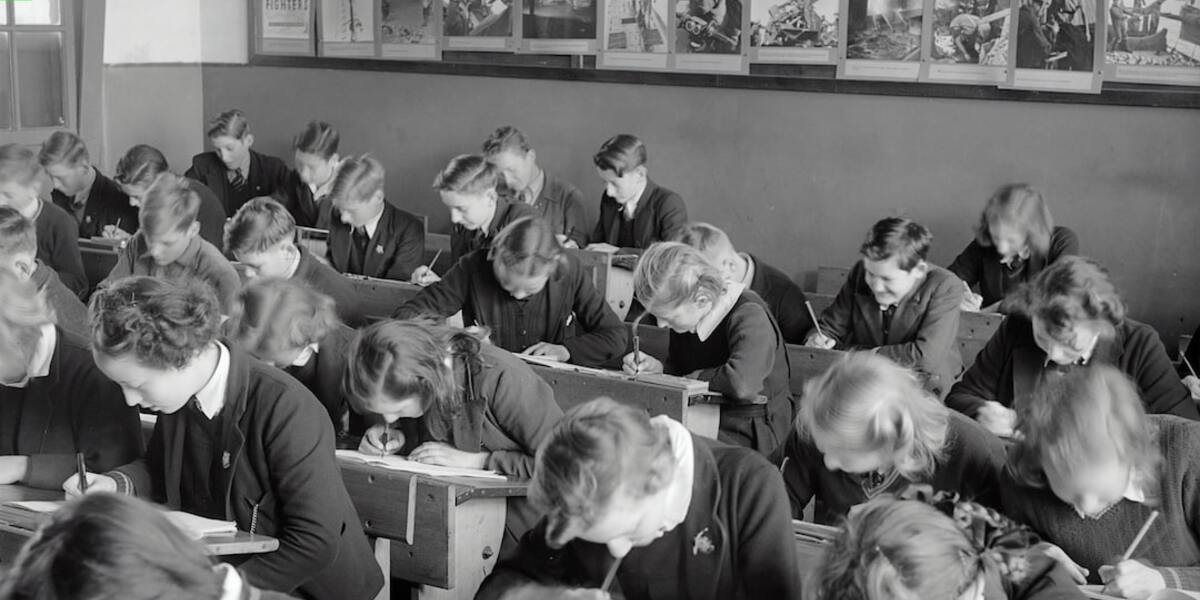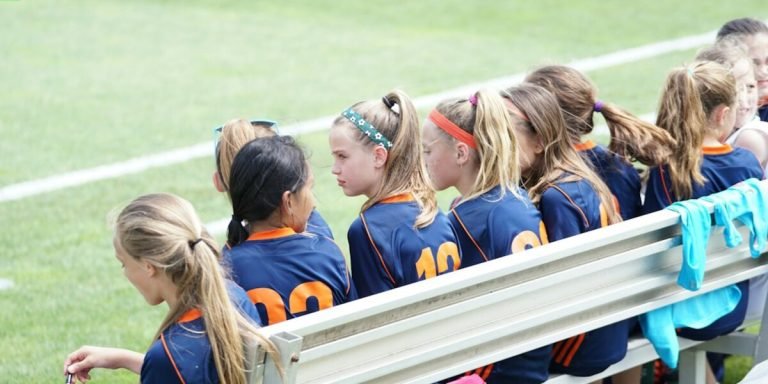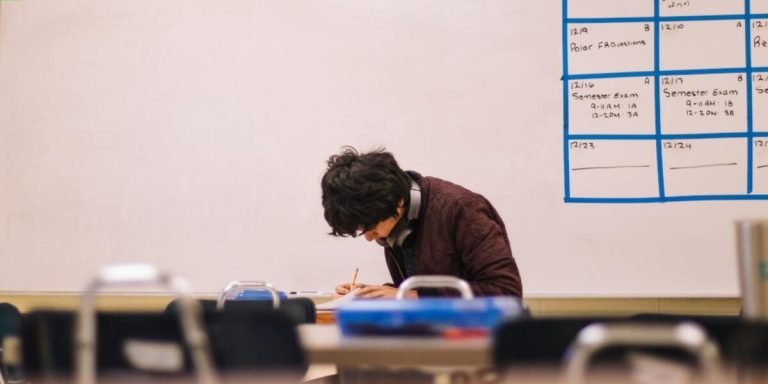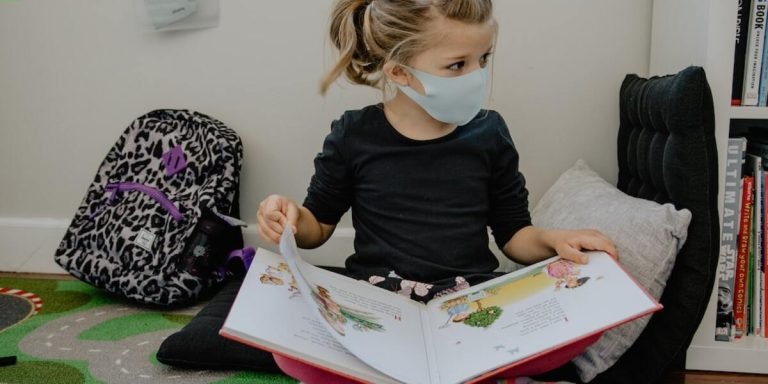3rd Grade Age: Understanding Child Development and Education Needs
Decoding the specifics of “3rd grade age” child development and educational needs is a critical step for every parent and educator. In this formative stage, youngsters begin to leverage their acquired skills in reading, writing, math – expanding their horizons beyond just play. The concern here isn’t merely about academic growth but also social-emotional progress that shapes them into well-rounded individuals.
This blog post aims to provide insight into understanding your third grader’s developmental milestones as well as addressing educational requisites pertinent at this age. It throws light on core areas including cognitive capabilities, emotional maturity levels and strategies tailored specifically towards enhancing education during these crucial years of elementary school education.
Did you know?
Did you know? At the 3rd-grade age, usually eight or nine-years-old, cognitive development allows children to start thinking logically about concrete events. This milestone significantly influences their capacity for academic learning and emotional understanding.
The Developmental Milestones of 3rd Grade Age Students
The third-grade age, which typically encompasses children aged 8 to 9 years old, is a crucial period in elementary school education. This year marks significant strides as youngsters transition from what is often known as the “early grades” and begin more structured learning. The focus shifts from learning how to read to reading comprehension, their mathematical skills escalate beyond basic addition and subtraction towards multiplication and division.
This developmental stage signifies not just academic progress but also notable advances in social-emotional growth. With increased exposure to group activities and collaborative projects at this phase of schooling, students around the age of third grade tend to become more adept at teamwork. They usually start understanding different perspectives better due largely part because they are now engaging with diverse texts that explore varied characters’ viewpoints.
Moreover, there’s an evident leap in physical development among children during this era too; their fine motor control improves significantly assisting them in activities requiring precision like playing a musical instrument or mastering cursive writing – all essential elements within our modern-day curriculum programs for effective childhood education enrichment strategies catering specifically to these fresh challenges faced by today’s 3rd graders.
Cognitive and Emotional Growth in Third Graders
As students pass through 3rd grade age, critical cognitive and emotional development stages occur. The journey from learning the alphabet to utilizing complex thought processes paves the way for a stronger understanding of various subjects.
At this stage in their elementary school education, children typically show substantial advancement in reading skills. They can read longer texts with more complexity while demonstrating improved comprehension levels. Third graders often start discovering new genres and authors, broadening their literary horizons like never before.
Furthermore, mathematics becomes an exciting realm where logic rules. From multiplication tables to fractions and time concepts, students at this level start mastering basic arithmetics that lay robust foundations for future problem-solving abilities.
Science exploration also takes center stage during these years as students delve deeper into topics about plants’ life cycle or why objects fall towards Earth due to gravity—fostering innate curiosity about natural phenomena around them.
Additionally, third grader’s writing competencies drastically evolve—they learn structuring sentences properly within paragraphs while creating coherent content using appropriate vocabulary suited for different situations; whether it be persuasive essays or creative storytelling pieces.
However, it is not only academics existing here —emotional intelligence growth plays an equally vital role too! Children become more aware of themselves – understanding emotions better along with recognizing others’ feelings—a crucial trait fostering empathy at such a tender age!
Key Physical Advancements at 8-9 Years Old
The physical development of a child at 3rd grade age, typically around eight to nine years old is a significant turning point in their elementary school education. During this phase, children showcase certain key advancements that set the groundwork for future progress.
One notable aspect during this stage revolves around fine motor skills refinement. At third-grade age, you will observe your little ones showing improved control over small objects and tools such as pencils or scissors with more precision compared to younger years. You might notice them practicing better handwriting skills on class assignments or neatly cutting out shapes for an art project.
Simultaneously, there’s tremendous growth in gross motor skills too which contributes significantly towards their overall physical activity levels. Kids at this 3rd grade age often take pleasure participating in team sports like soccer or basketball where they exhibit enhanced coordination between arms and leg movements – running quickly down the field while keeping tabs on the ball display how far they’ve come!
Next comes stamina increment which aids longer periods of play without getting easily tired; adding another layer of robustness necessary for higher-level tasks performed during later stages of elementary schooling and beyond! It wouldn’t be surprising if these young learners want to spend hours playing tag at recess or completing fairly long bike rides over weekends without needing constant breaks.
Structuring an Effective Learning Environment for 3rd Graders
Creating an effective learning environment for children at the 3rd grade age, typically around eight or nine years old, is critical in shaping their academic achievements and attitudes towards education. In today’s educational landscape of 2023 where digital tools are increasingly utilized to facilitate teaching and learning processes, it is important that these environments cater to both the physical and virtual aspects of a third grader’s world.
Physical spaces should be organized thoughtfully with child-friendly furniture positioned strategically to promote collaborative engagements while maintaining adequate personal space embodying safety protocols. It’s also beneficial incorporating elements such as wall art showcasing students’ work which can foster a sense of pride and engagement among learners.
In terms of virtual platforms used either for remote learning or integrating technology within classrooms, ensure they provide user-friendly interfaces specifically designed for this young age group. The application features should align with their cognitive abilities facilitating ease in navigation without causing undue frustration.
To successfully engage your 3rd graders during instruction time, teachers must make use of varied instructional strategies including visual aids like charts or diagrams coupled with plenty animated explanations helping them grasp abstract concepts better. Remember interactive activities play a key role at this stage; hence educators promoting peer discussions via think-pair-shares technique will enhance their understanding through diverse perspectives ultimately stimulating intellectual growth.
Essential Classroom Resources for Optimal Engagement
In 2023, creating an optimal learning environment for students of 3rd grade age becomes a task of utmost importance. A child at this stage starts to develop his or her own interests and is rapidly growing both mentally and physically. Hence, ensuring they have the right classroom resources can drive their engagement significantly.
Firstly, interactive whiteboards are proving themselves as indispensable tools in embracing tech-friendly education trends. These digital boards help to make lessons more vivid and engaging; thus aiding better understanding among 3rd graders.
Secondly, having accessible book corners with appropriate reading materials fosters literacy skills among children of third-grade age while catering to their expanding curiosity about diverse topics from dinosaurs to deep space explorations which aligns well within elementary school’s guidelines on broadening horizons.
Creating a Supportive Social Atmosphere for Young Learners
Creating a supportive social atmosphere for young learners is crucial in third grade. This age, known as the ‘3rd-grade age’, marks an important transition from early childhood learning towards more structured and formal education.
At this 3rd-grade age, children are usually around eight to nine years old. They become increasingly aware of their social environment and start seeking affirmation from peers instead of just adults. Therefore, ensuring that they find acceptance and understanding within their class community can positively impact their academic progress.
One great way you could foster such an atmosphere begins with encouraging collaboration amongst students at this stage through group projects or cooperative games during recess time. These activities not only enhance learning but also help build positive relationships among classmates which serve to support emotional development.
Next on our list would be incorporating inclusive teaching strategies in your curriculum like peer tutoring or mixed ability grouping where stronger students can assist those lagging behind; hence promoting empathy amidst diversity while reinforcing learnt concepts themselves-it’s a win-win!
Frequent classroom discussions focusing on topics relevant to the values of respect, kindness etc., when conducted regularly will go a long way too! Such shared experiences solidify bonds between scholars whilst cementing these core principles into them practically-not merely theoretically- by providing real-life scenarios wherein they apply these morals firsthand, probably even unintentionally sometimes!
Curriculum Focus Points for Children Aged Eight to Nine
As children enter the third grade, typically at age eight or nine, their curriculum undergoes a significant shift. Parents and educators alike may witness an evolution in topics that are designed to grow along with them. The focus of education within this age begins to place higher significance on developing individual abilities, cognitive skills, social interaction while gradually fostering independent learning habits.
At this 3rd-grade level, lessons start inching towards more complex subjects incorporating advanced reading comprehension and honing math capabilities such as multiplication and division concepts. Vocabulary starts becoming rich; Children begin exploring science fundamentals in deeper detail like life processes, weather changes etc., placing underpinning knowledge upon which future understanding can be built.
Simultaneously crucial emphasis is dedicated towards enhancing students’ communication and problem-solving skills during these formative years of elementary schooling—preparing young learners for imminent challenges as they ready themselves for middle school academic engagements. Social studies also take centre stage giving insights into diverse cultures thus priming early inklings about global citizenship among pupils aged eight to nine.
Core Academic Subjects and Competencies in Third Grade
Understanding the core academic subjects and competencies that a child of 3rd grade age should be exposed to, is essential for both educators and parents. These are not just mere educational elements but also crucial building blocks in shaping the overall development of your eight or nine-year-old youngster.
Mathematics forms an important part in third grade education. Children at this stage start learning multiplication and division concepts more deeply with larger numbers up to hundreds and thousands. They become familiarized with fractions as well, recognizing them on number lines, comparing their sizes and understanding simple fraction addition.
Moving onto Language Arts, reading becomes increasingly complex during 3rd grade age. Kids begin exploring variety of texts like biographies, poems etc., enhancing their comprehension skills while expanding vocabulary breadth simultaneously. Writing topics veer towards essays or reports which give children opportunities to express personal ideas coherently.
In Science curriculum focus shifts from general exploration of the world around us towards specific areas such as physical science (forces & motion), life sciences (habitat adaptation) ,and earth sciences (climate). Experiments become more intricate offering rich hands-on experience thus fostering problem-solving abilities.
Enrichment Activities That Complement Standard Education
During the formative years of a child’s life, specifically around the “3rd grade age”, elementary school education plays an integral role in shaping their skills and abilities. One such method to boost this learning experience is through enrichment activities that complement standard education.
In our fast-paced world where innovation drives change, it becomes essential for children aged eight to nine to develop cognitive skills beyond traditional academics. Enrichment activities are designed exactly for this purpose – they encourage creativity, critical thinking, problem-solving capabilities and most importantly foster social-emotional development.
One popular way of adding value to 3rd-grade-age learners’ journey is through introducing them towards book clubs or reading circles. This not only promotes a love for literature but also enhances vocabulary and comprehension ability. It allows students further exposure into diverse cultures and encourages empathy.
Artistic pursuits like painting classes or DIY craft sessions can ignite imaginative thinking within your little one too! They provide ways no textbook could teach – self-expression without judgment & creative freedom with colors!
Science experiments could be another exciting avenue here! Placing theory aside momentarily and embracing practical applications create curiosity while solidifying scientific concepts clearly among these young minds.
Similarly engaging physical exercises as part of daily routine builds coordination along with ensuring fitness amidst increasing screen-time nowadays.
Conclusion
As we navigate the rewarding yet challenging journey of parenthood and education, understanding the nuances of each developmental stage is vital. With respect to 3rd grade age, it’s a compelling chapter in our children’s educational voyage where their cognitive abilities take significant strides. It all boils down to furnishing them with suitable support systems that can help bring out their best intellectual prowess.
Encourage you not just to stop here but explore more around childhood development on our website so as to make this consequential phase simpler for both your child and yourself! Our platform is filled with myriad resources shaped essentially for parents and educators alike. After all, empowering ourselves with discerning knowledge paves an easier path towards nurturing future leaders.







